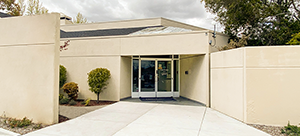Calculate the financial and emotional costs of caring for an aging parent at home.
Like many people, you may be assuming that your parent will move in with you if she can no longer live alone. Indeed, caring for an aging parent can be a rewarding experience. However, there are also many financial and emotional costs to consider, from how the move will affect your family to how much retrofitting your home could cost.
Half of adult children who live with a parent report being satisfied with their living situation, according to research from Caring.com. For the 50 percent struggling, the problem could be a lack of financial and emotional preparation.
“Family members tend to underestimate the care needs of their loved ones. People just don’t realize how much of an impact it’s going to have on their lives,” says Katie Roper, vice president of sales and marketing at Caring.com.
“One thing we’ve discovered is there isn’t a one-size-fits-all approach,” she says “The most important thing to do is to figure out the costs ahead of time so you’re not blindsided by them.”
Here are some questions to consider:
How much care is your loved one going to need? Caregiving at home can be overwhelming. Before moving Mom in, consult with a physician to determine what kind of care she will need and whether it’s practical for you to provide it. Are you prepared to help with bathing and dressing? Is she prepared to let you? Does she have any medical conditions that require medication or care? Do you have time to schedule doctor appointments and provide transportation, if needed?
What expenses will be involved? Sometimes caring for parents at home can be a financial benefit; they may be able to contribute to childcare or household expenses, such as food and utilities. But if your loved one is at risk for falls or has memory issues and requires more supervision, you might start to feel some financial strain. If you needed to, could you afford to cut back on hours at work or hire in-home care? About 27 percent of those whose loved ones live with them hire professional help. “That can get very expensive,” Roper says.
Is your home move-in ready? Does your house have multiple stories? Are there fall risks? There’s a good chance you’ll have to spend money modifying your home to make it safer and more accessible. Once an older adult moves in with a family member, it is often for the long haul — nearly 80 percent of those who told Caring.com they were living together had been doing so for longer than three years. Plan for home upgrades or accommodations and consider any remodeling or renovation costs as well as the possible installation of an electric stair lift or a wheelchair- or walker-accessible bathroom.
How will your parent’s presence impact you and your family — and how will you impact them? Having a multigenerational household can be a wonderful experience involving lots of stories and life lessons. Or, depending on your relationship with your parent, sharing a living space can dredge up old conflicts and cause tension. Make sure to consult with your spouse and children before making any decisions. The move can be hard on your parent, too. “If the older person has been living in a house that’s quiet and clean and they move in [with] a family with teenagers, how are they going to think about that?” Roper says. “Does the 86-year-old want to hear pop music all night?” Your parent is half of the decision-making process, so think about setting mutually agreed upon ground rules.
Ultimately, caring for an aging parent in your home is right for some families and not for others. Think carefully about these issues ahead of time to determine if sharing your home is right for you.




















